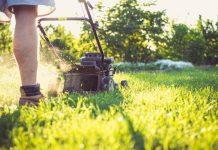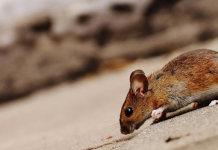The two make it or break it periods for a person who manages a lawn are during the fall and winter. The best that you can do is to prepare your yard for the coming cold months. For anyone who thinks that preparing the yard to last throughout the winter is like any other task should take to read this lawn care tips and make a proper judgment.
1. Aeration should be done at Least Once in a Year
The best treatment you can give your lawn is to allow it to breathe in autumn and winter. Using the correct tools to break the soil and grass should guarantee a better job. Aeration is a critical fall lawn care practice and will enable nutrients, water and oxygen to reach the turf’s roots.
With new spaces created on the soil, new seeds can now sprout, and grass can spread as expected. Busy lawns that double up, a playground for your kids’ needs aeration at least two times in a year.
2. Seed the Lawn
In autumn, the soil temperature reaches 55 degrees Fahrenheit. The lawn roots at this time of the year are sprouting, and this defines the best time to start seeding the lawn. The choice of seed type also influences the resistance levels of the grass that will sprout on the lawn. Seeds that are not expensive may be quick to sprout but may not be able to compete for the insects and weeds. High-end seeds are better fighters when it comes to resisting diseases and insects or even bad weather.
3. Fertilize Before Frost
Waiting for late fall to start fertilizing will be a blessing to your yard because the grass will absorb and store the nutrients. The stored nutrients will become handy at a later stage when the winter becomes harsh, but your lawn will maintain its green luster.
Late season fertilization of the lawn means having the first germination in the spring. The best fertilizers are those that are high in phosphorous that are essential for root growth. In localities that do not allow the use of phosphorous, use nitrogen fertilizers instead.
4. Use Leaves for Mulching
Most leaves in winter will freeze and thaw leading to the formation of soluble forms of nitrates and phosphates. To avoid the nutrients running into the drain, grind them and use them as mulch on your lawn.
Continuous raking also reduces browning on the yard. If the leave and debris are too many, rake and burn them.
5. Keep Mowing
Winter demands that you keep taking care of your lawn by continuous mowing. The only time to stop mowing is when you notice a slow growth or make sure the grass height does not exceed two and a half inches. Anything longer than three inches can lead to lawn disease problems such as the snow mold.
6. Water as Necessary
The temperature may be cooler, but watering is a crucial aspect of yard maintenance. Grass will keep growing in autumn, to sustain the growth you need to water consistently. The moment you notice the ground freezing stop the watering.
7. Control the Weeds
The yearly breadleaf weed is a typical autumn problem including plantain, creeping Charlie, and clover. While you can remove some of these weeds by hand, you may need a specialized tool to remove those that are scattered and confined in small areas. Use an effective herbicide to spot treat the weeds.
If you have spray containers, complete the treatment when the temperature rises to 50 degrees. Some herbicides require more time to act before the cold season sets in. Take care of your garden by removing all sticks and debris lying within the yard.
8. Prepare Your Plants for the Frost
If you live in a hard winter region, put all the watering hoses and turn off the water system leading to the lawn. You can as well protect the leading pipes with insulated foam covers.
All the tiny potted plants should be taken inside to protect them from freezing. Those living in moderate winter regions can use an insulated cover over the plants to guard them against frost. All plants that are not in the season should be removed from the flowerbeds.
The winter is here
As the temperature drops, so are the leaves and some plants start changing colors. All the steps above are to make your lawn better and healthier ready to survive the winter and enjoy it when the warm weather sets in.
Conclusion
This guide has tips explaining the measures to take when preparing your garden or lawn for the cold winter. With all the effort you have used in maintaining the green luster, winter should not be that time that forces you to start all over again.



















